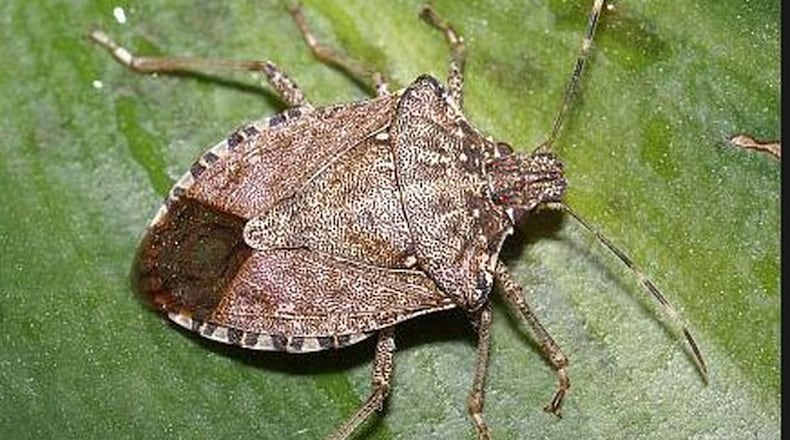Q: I have an indoor stink bug problem. I kill ten or so every day but it doesn't seem to make much of a difference. Ryan Smith, Monroe
A: You likely have a bunch of brown marmorated stinkbugs (BMSB). They love to suck juice from peaches, plums and apples. Unlike native stinkbugs, the BMSB gathers on warm house siding in winter and wanders about. Many will be found indoors if you have cracks through which they can crawl. When found, sweep them up and kill them outside. Don't use a vacuum unless you want to enjoy the bugs' stink for several weeks when you clean. Fill any cracks around doors and windows. I have more info on this pest at bit.ly/GAstinkbug.
Q: How do I stunt the height of my tomato plants? Every year they grow to at least seven feet high. I would like to limit that to four or five feet if possible. Ray Kraus, Roswell
A: Next spring when you buy tomato plants look at the tag and notice the words "determinate" or "indeterminate" Indeterminate tomatoes continue growing all season long and produce fruit on the new growth. Determinate tomatoes stop growing at a genetically predetermined vine length, set a final fruit bud, and then the vine fades. Plant only determinate tomatoes next year and you can set aside the stool you used to harvest fruit this year.
Q: Over Thanksgiving, a woodpecker started making a nest in a tulip poplar over our house. Does this indicate that the tree is hollow/diseased and a threat to the house? David Dusenbery, email
A: It is hard for me to assess the threat to your house but the tree is very likely hollow between the two nest entrances. This is a characteristic pattern for pileated woodpecker homes. They typically abandon the roost after a year but screech owls and squirrels may move in instead. Your tree was probably already rotten/hollow before the bird started excavating. Even without the woodpecker, it was/is likely to break at that point. Consider hiring an ISA certified arborist to take a look: www.georgiaarborist.org.
Q: I recently discovered that several of my pine trees have sap collecting on the bark. How do you know when they need to be cut down or treated? Can the trees survive long-term or is it just a question of time? Debbie Venner, email
A: Pines can certainly survive a beetle attack. It all depends on how many tunnels the beetles have made underneath the bark. If they bore lots of tunnels, water can't get to the top of the tree and the pine dies. If your trees look healthy, just continue to monitor them each week. If the needles turn yellow and then turn brown over a month's time the trees will need to be removed. Because pine beetles can attack the tree from ground level up to fifty feet high, spraying insecticide is not possible for a homeowner. In very dry weather, give each tree at least three hundred gallons of water per week. Water helps trees repel boring insects by drowning them in sap.
About the Author
The Latest
Featured


